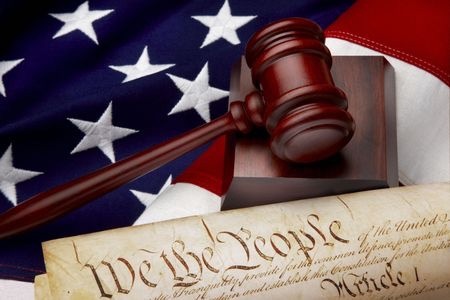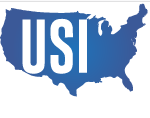“Although the PTAB has wrought much damage to the patent system, only the most zealous are foolish enough to think Congress will allow the tribunal to fail, which makes whatever the Supreme Court might rule little more than an advisory opinion and wholly inappropriate for a formerly relevant and august body.” – Gene Quinn
 The United States Supreme Court has granted certiorari in three cases involving Arthrex, Inc. focusing on the question of whether the administrative patent judges (APJs) of the Patent Trial and Appeal Board (PTAB) were constitutionally appointed. The Court has consolidated the cases and limited the questions to question one and two in the United States government’s memorandum of July 22 in both Smith & Nephew, Inc., et. al. v. Arthrex, Inc. et. al. and Arthrex, Inc. v. Smith & Nephew, Inc., et. al.
The United States Supreme Court has granted certiorari in three cases involving Arthrex, Inc. focusing on the question of whether the administrative patent judges (APJs) of the Patent Trial and Appeal Board (PTAB) were constitutionally appointed. The Court has consolidated the cases and limited the questions to question one and two in the United States government’s memorandum of July 22 in both Smith & Nephew, Inc., et. al. v. Arthrex, Inc. et. al. and Arthrex, Inc. v. Smith & Nephew, Inc., et. al.
The questions are:
- Whether, for purposes of the Appointments Clause, U.S. Const. Art. II, § 2, Cl. 2, administrative patent judges of the U.S. Patent and Trademark Office are principal officers who must be appointed by the President with the Senate’s advice and consent, or “inferior Officers” whose appointment Congress has permissibly vested in a department head; and
- Whether, if administrative patent judges are principal officers, the court of appeals properly cured any Appointments Clause defect in the current statutory scheme prospectively by severing the application of 5 U.S.C. 7513(a) to those judges.
As outlined here, there were four petitions filed with the Supreme Court relating to the October 2019 Federal Circuit decision in Arthrex, Inc. v. Smith & Nephew, Inc. Case No. 19-1204 was denied cert on October 5.
The 2019 Federal Circuit decision ruled that the current statutory scheme for appointing APJs to the PTAB violates the Appointments Clause of the U.S. Constitution as it makes APJs principal officers. APJs have always been appointed by the Secretary of Commerce, but principal officers must be appointed by the U.S. President under the Constitution, Article II, § 2, cl. 2. To remedy this, the CAFC reasoned that the narrowest remedy would be to sever the restriction on removal of APJs from the statute, which would render them inferior officers. The Court followed the approach set forth by the Supreme Court in Free Enterprise Fund v. Public Company Accounting Oversight Board (2010) and followed by the U.S. Court of Appeals for the D.C. Circuit in Intercollegiate Broadcasting System, Inc. v. Copyright Royalty Board (2012), and ultimately ruled that the PTAB’s determination that Arthrex’s claims were unpatentable as anticipated must be vacated and remanded to a new panel of APJs.
The U.S. government’s petition for writ of certiorari was filed in June 2020 and seeks review of both Arthrex and Polaris Innovations Ltd. v. Kingston Technology Co., Inc.
Here are some initial reactions from stakeholders on SCOTUS’ decision to grant cert:
William Meunier
 (far left) and Michael Renaud, Mintz Levin
(far left) and Michael Renaud, Mintz Levin
If the Supreme Court determines that PTAB judges were already constitutionally appointed or that the Federal Circuit has already cured any past constitutional defects, then the impact going forward could be relatively narrow, probably impacting only the 100-plus PTAB decisions that the Federal Circuit has remanded to the PTAB because they were both decided by unconstitutionally appointed judges (in other words, those decided prior to the Federal Circuit’s Arthrex decision “cured” the Appointments Clause defect) and timely appealed under the Appointments Clause defect.
But if the Supreme Court decides that the PTAB judges were unconstitutionally appointed and the Federal Circuit’s Arthrex decision did not already cure this defect, then the impact could be more widespread. Such a ruling would mean that all PTAB decisions to date were unconstitutional and could open up a floodgate of additional challenges to past, pending, and future PTAB rulings.
 William H. Milliken, Sterne, Kessler, Goldstein & Fox
William H. Milliken, Sterne, Kessler, Goldstein & Fox
Arthrex will likely be of interest to a broad swath of practitioners and scholars of administrative law—not just the patent law community—because it presents the Supreme Court with an opportunity to clarify the notoriously murky line between a “principal” officer and an “inferior” one. As the Court observed in Edmond v. United States, the case law does “not set forth an exclusive criterion” for distinguishing between the two. The Court has stated that “‘inferior officers’ are officers whose work is directed and supervised at some level by others who were appointed by Presidential nomination with the advice and consent of the Senate,” and has provided three factors that courts should consider in making that decision: (i) whether the officer’s decisions are subject to review and reversal by a higher executive-branch official; (ii) the level of supervision to which the officer is subject; and (iii) whether the officer is removable at will. However, these factors are not necessarily exhaustive, and their relative weight in the analysis is not always clear. A decision in Arthrex could provide practitioners and the lower courts with significant guidance in this area.
Gregory Morris , Honigman
, Honigman
The high impact outcome would be a finding by the Supreme Court that the Federal Circuit’s fix of the law dealing with how PTAB judges can be removed from power is not valid. We simply do not know what would happen next or if action would be required by Congress to right it.
 Bradley Olson, Barnes & Thornburg, LLP
Bradley Olson, Barnes & Thornburg, LLP
Today’s Supreme Court Order granting certiorari in U.S. v. Arthrex shows that “the time for kicking the can down the road [has now come] to a close.” Trying to read judicial tea leaves is often waste of time, but if Judge Amy Coney Barrett is elevated to the Supreme Court, and takes part in the Arthrex opinion, some suggestion as to how she may decide in Arthrex may be gleaned from two seminal patent opinions issued in 1999 that were joined by Justice Scalia when Judge Barrett was clerking for him. Those two patent cases were Florida Prepaid Postsecondary Educ. Expense Bd. v. College Sav. Bank, 527 U.S. 627, 119 S.Ct. 2199 (1999) (inter alia, Congressional intent to abrogate states’ immunity from patent infringement claims was unmistakably clear in statutory language) and Dickinson v. Zurko, 527 U.S. 150, 119 S.Ct. 1816 (1999) (APA standards governing judicial review of findings of fact made by federal administrative agencies applies when the Federal Circuit reviews findings of fact by the PTO). While then-clerk Barrett’s actual contributions to those opinions is unknown, those two opinions are consistent in a conservative and doctrinal approach to their ultimate holdings. It would not be surprising if the opinion in the upcoming U.S. v. Arthrex opinion gets support from then-Justice Barrett for yet another reversal of the Federal Circuit and results in a seismic shift in PTAB jurisprudence.
 Gene Quinn, IPWatchdog Founder and CEO
Gene Quinn, IPWatchdog Founder and CEO
The Supreme Court accepting Arthrex is so typically SCOTUS. Rather than take a case on patent eligibility to fix the disgraceful mess that the Court caused and has allowed to perpetuate, the Court accepts a case that will ultimately matter to no one. A legislative fix to the so-called Arthrex problem was being discussed in Congress at the end of 2019 and presumably became sidetracked by both the coronavirus pandemic and the reality that the USPTO proceeded as if nothing actually transpired. Although the PTAB has wrought much damage to the patent system, only the most zealous are foolish enough to think Congress will allow the tribunal to fail, which makes whatever the Supreme Court might rule little more than an advisory opinion and wholly inappropriate for a formerly relevant and august body.
 Robert Stoll, Faegre Drinker Biddle & Reath LLP
Robert Stoll, Faegre Drinker Biddle & Reath LLP
In practice, the PTAB judges don’t act independently. I point out that the 101 guidelines from January of 2019 expressly apply to the PTAB judges. And certain decisions are deemed precedential by the Director and must be followed. Also, the Director has had the ability to expand the PTAB panel even before the AIA. Sounds more like “inferior judges” to me. I also point out that the USPTO is simply withdrawing the grant of an improvidently granted patent that it issued. It should be recognized that arguments about a non-Constitutional taking would also apply to the examiners who handle ex parte reexams and who have been doing their jobs for decades!
As to taking away the PTAB judges’ employment protections, I just think that is wrong. PTAB judges took the jobs recognizing they had the protections and taking those protections away can have significant unintended consequences.
 Jonathan Stroud, Unified Patents
Jonathan Stroud, Unified Patents
If James Carville were reporting on patent law reporting at the Supreme Court, he’d say, “It’s Administrative Law, stupid.” The now-decade-old uptick in certiorari grants have almost exclusively been tied to questions related to administrative law, a major concern for the modern Court. Justice Gorsuch and Kavanaugh in particular—for different reasons and from distinct judicial philosophies—care deeply about how the agencies interact with the Executive, Legislative, and Judicial branches. This reflects that. With the number of amicus and cases likely affected and the Constitutional question, the grant is no surprise. And Nominee Judge Amy Coney Barrett seems equally likely to share their concern. How they fashion a remedy, or don’t, or rule here, I don’t think any of us have much insight into.
 Excerpt from Statement of US Inventor
Excerpt from Statement of US Inventor
Inventors have raised concerns about the qualifications and biases of the 260 APJs, many of whom were selected while the former head of patents for Google was leading the USPTO during the Obama administration. The Chief APJ at the time quipped that it was their job to be a “death squad” for patents…. US Inventor has filed an amicus brief in the case arguing that Congress must correct their mistake in the 2011 America Invents Act to require that APJs be appointed by the President and confirmed by the Senate like all other judges. In the alternative, they suggest that the Supreme Court could declare decisions rendered by APJs to be advisory, leaving the final decision to be made by a properly confirmed judge. Josh Malone, volunteer at US Inventor says, “The USPTO has been reconfigured to protect large corporations from the threat of inventors with better ideas – there is no justification for denying inventors the right to a hearing before a qualified and impartial judge”.
Image rights acquired by 123RF.com

![[IPWatchdog Logo]](https://ipwatchdog.com/wp-content/themes/IPWatchdog%20-%202023/assets/images/temp/logo-small@2x.png)

![[[Advertisement]]](https://ipwatchdog.com/wp-content/uploads/2023/01/2021-Patent-Practice-on-Demand-1.png)
![[Advertisement]](https://ipwatchdog.com/wp-content/uploads/2024/05/Quartz-IP-May-9-2024-sidebar-700x500-1.jpg)
![[Advertisement]](https://ipwatchdog.com/wp-content/uploads/2024/04/Patent-Litigation-Masters-2024-sidebar-700x500-1.jpg)

![[Advertisement]](https://ipwatchdog.com/wp-content/uploads/2021/12/WEBINAR-336-x-280-px.png)
![[Advertisement]](https://ipwatchdog.com/wp-content/uploads/2021/12/2021-Patent-Practice-on-Demand-recorded-Feb-2021-336-x-280.jpg)
![[Advertisement]](https://ipwatchdog.com/wp-content/uploads/2021/12/Ad-4-The-Invent-Patent-System™.png)






Join the Discussion
11 comments so far.
Night Writer
October 15, 2020 07:31 am@3 Wow Whitehouse lays out corruption.
The patent system being hamstrung is just one of many.
concerned
October 15, 2020 06:53 amLitig8or:
You are back. There are reasons for the complaints. Look no further than the SCOTUS Alice ruling that added words to the statute and then refusing to not define such words. It goes downhill from there in a nation where allegedly rule of law exists.
During the current SCOTUS confirmation hearings, Mrs. Barrett steadfastly maintains she will uphold the law as it has been written. Mrs. Barrett would not need to make such a statement to Congress if SCOTUS actually did what she is promising to do.
I have an examiner that has not been truthful. My attorney politely calls his rationale “non-responsive” in the official record.
All of the above is an attempt to justify the end by the means. If my patent application is to be defeated, I want it to be defeated by the law and the truth, not by throwing anything and everything against the wall until “mission accomplished” sticks. The first examiner could not accomplish the mission, so a second examiner was mysteriously assigned to my application.
Litig8or: Is this the kind of law you envisioned when first deciding to be an attorney?
Jam
October 14, 2020 07:56 pm@ 5
Thanks for your criticism Litig8or. However, your argument is undermined by lacking proof that drafting valid claims under present 101 jurisprudence is a simple task. A way to remedy this deficiency is to rewrite a claim from a rejected case to be eligible. For example, take any claim from Alice, Electric Power, Mayo, etc. and simply rewrite the claim in a patent eligible form that no court can overturn under 101. Feel free to make up any facts or limitations to add to your modified claim (i.e., don’t worry about 112, 102, 103 issues) and show how easy it is to write 101 eligible claims. It shouldn’t take more than a few minutes when you can make up your own limitations.
Jeff Hardin
October 14, 2020 06:52 pmUnintended consequences indeed! Just listen to the very testimony John M. Whealen provided to the House IP Subcommittee last year following the Arthrex ruling that PTAB APJs were unconstitutionally appointed. And Whealen should know. He was Counsel to the Senate Judiciary Committee when the America Invents Act and the PTAB was being created.
Go here:
https://youtu.be/rTsD4vWl6Rg
Jam
October 14, 2020 06:51 pmArguably, SCOTUS will not pick up a 101 case unless ACB can provide a fourth vote needed to hear a case. The left of center justices (including Roberts) don’t care about 101. Thomas wrote Alice and won’t undue his handiwork. Presently that leaves 3 right of center justices that might care about 101 jurisprudence extending beyond the laws passed by the Congress and signed by the President.
Josh Malone
October 14, 2020 04:31 pm@Gene Quinn – most legislators who voted for the AIA have acknowledged that the PTAB produced unintended consequences. They did not expect thousands of petitions, an 84% invalidation rate, overturning of jury verdicts, or an inventor uprising. They will not be passing a quick fix if the PTAB is invalidated by the Supreme Court.
Litig8or
October 14, 2020 01:36 pmPeople (i.e., patent prosecutors!!!!) never stop complaining about Section 101, when all they have to do is learn how to write valid claims. Alice is now years old. Get with the program. I claim: “A method for whining about the Supreme Court while drafting invalid patent claims for things my client didn’t really invent.”
Anon
October 14, 2020 12:38 pmAlthough I largely agree with Mr. Quinn’s sentiments (Congress most likely to step in with a quick fix), I will disagree as to the importance of the ‘august body’ stepping in being some type of inopportune action.
Improper legislating from the bench should be stopped where possible. While this is indeed a small(er) matter, it is still improper legislating from the bench.
Who knows, the SC might start a new habit, and even someday become relevant (in a good way) with patent law.
jacek
October 14, 2020 12:10 pmScotus or rather “Puppets of Dark Money” in the light of Senator Sheldon Whitehouse yesterday Presentation during Supreme court nominee Amy Conney Barred hearings. (See 7 minutes of https://www.youtube.com/watch?v=QC8ANBp_4j8&feature=youtu.be&t=13693)
Scotus decided to act only after 50 companies wrote to the U.S. Congress concerned about the life of their invention: PTAB in the light of the Arthrex case.
Their concern is that they will not invalidate more patents using their stooges, and they will deal with juries once again. Juries are hard to influence/temper.
So do not expect a significant fix. The permanent Fix is in overturning of Citizens United.
Patent Investor
October 14, 2020 10:04 am“As to taking away the PTAB judges’ employment protections, I just think that is wrong. PTAB judges took the jobs recognizing they had the protections and taking those protections away can have significant unintended consequences.”
As to taking away the Patent holders’ Constitutional protections, I just think that is wrong. Patent holders invested in their patents recognizing they had the protections and taking those protections away can have significant unintended consequences.
Pro Say
October 13, 2020 07:00 pm“Such a ruling would mean that all PTAB decisions to date were unconstitutional and could open up a floodgate of additional challenges to past, pending, and future PTAB rulings.”
This is one floodgate which needs to opened.